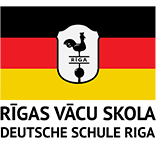In Latvia, only 43.8% of the population aged 30 to 34 has a higher education, and according to this indicator, it lags behind other Baltic countries, writes Eurostat.
According to the latest available data for 2017, Lithuania is the leader among the European Union countries in terms of the number of 30-34-year-old residents with higher education – 58%. Then come Cyprus (56%), Ireland (55%), in two other countries more than half of the population can boast a diploma, these are Luxembourg (52.7%) and Sweden (51.3%). Denmark is in the sixth place (48.8%), and Estonia – the seventh (48.4%).
The lowest number of people aged 30–34 years with a higher education is in Romania (26.3%), Italy (26.9%) and Croatia (28.7%).
On average, 40% of people aged 30–34 years in the European Union have a higher education. Women more often than men bring education to the end: 45% versus 35%.
If we take wider age intervals, then every third (34%) European is 25–54 years old, and only every fifth (21%) 55–74 years old completed higher education. In Latvia, the situation is better: 36% at the age of 25–54 years and 25% of 55–74 years received higher education.

































